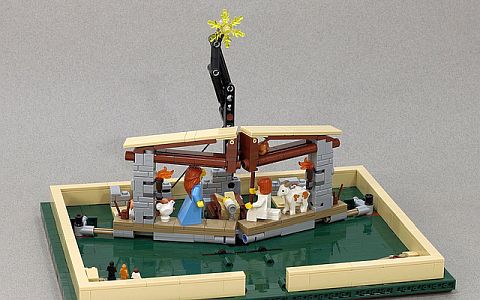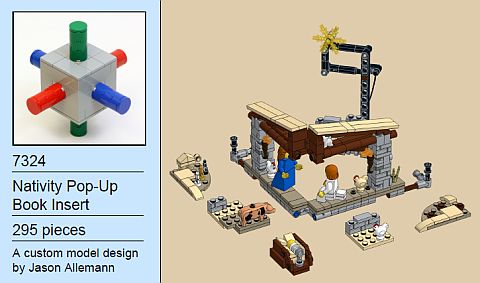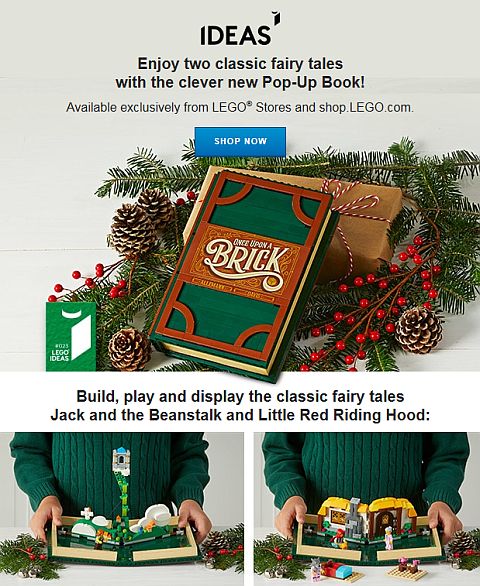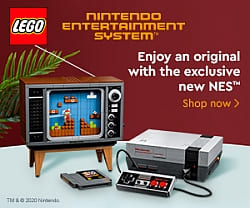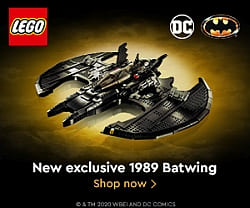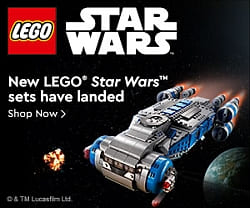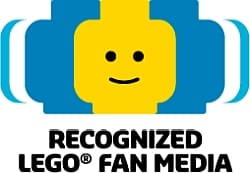The recently released #10267 LEGO Creator Gingerbread House is a lovely addition to the LEGO Winter Village series. If you are new to the LEGO Winter Village collection, the #10263 LEGO Winter Village Fire Station from last year, and the #10254 LEGO Winter Village Holiday Train from 2016 are still available as well. And, if you would like to add additional buildings, vehicles, and decorations to your winter village, but need a little help, there are some lovely LEGO books I would recommend.
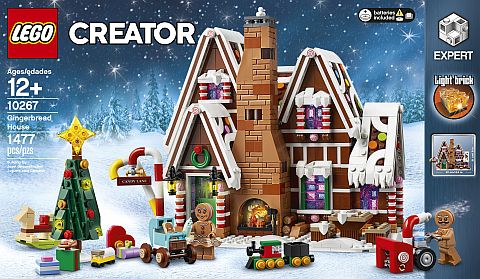

Expanding The LEGO Winter Village by Canadian LEGO fan Charles Pritchett includes full color, easy-to-follow instructions for six models; a ski and snowboard shop, a photo booth with Santa, a city fountain with Christmas decorations, a classic car, an old truck, and a horse with sleigh. Each of the models includes a list of parts needed, as well as step-by-step instructions. The book is 8×10 inches, full color, softbound, with 151 pages. The projects in the book match the size and style of the LEGO Winter Village sets perfectly, so you can use them for your own village. The book would also make a great gift for LEGO fans on your Christmas shopping list. Regular price is $24.99, but you can find it for less on Amazon: EXPANDING THE LEGO WINTER VILLAGE BOOK ON AMAZON
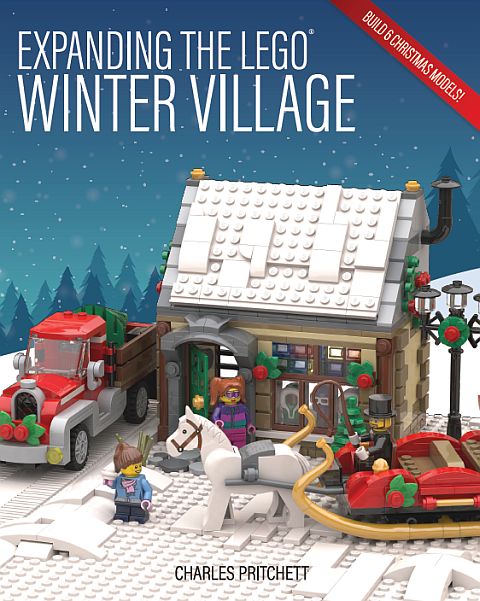
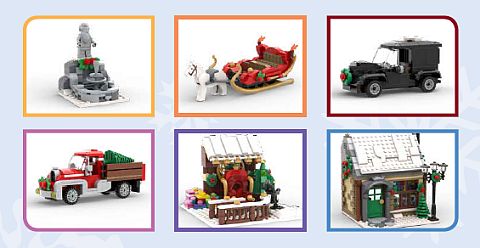
Expanding The LEGO Winter Village: Volume Two, features instructions for an additional six models; an old church with Christmas decorations, a winter greenhouse, a sweets market stand, an old bridge, a delivery truck, and small cargo plane. This book is also 8×10 inches, full color, softbound, with 158 pages. Regular price is $24.99, but you can find it for less on Amazon: EXPANDING THE LEGO WINTER VILLAGE: VOLUME TWO ON AMAZON

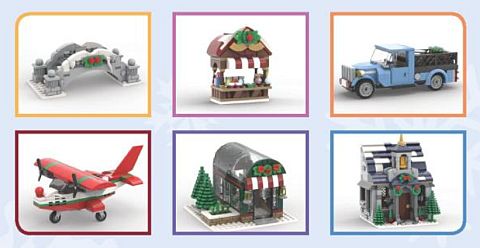
I also thought to remind you of the previously released The LEGO Christmas Ornaments Book: 15 Designs to Spread Holiday Cheer and The LEGO Christmas Ornaments Book – Volume 2: 16 Designs to Spread Holiday Cheer. Both books are by Chris McVeigh, who was recently hired by LEGO as a model designer. (You can visit his website here: ChrisMcVeigh.com) We reviewed both books in the past (see links at the end of this post), but in brief, they include instructions for some sweet LEGO holiday ornaments you can build together with friends and family. The regular price for each book is $19.95, but Amazon offers them with a discount. Here are the links: LEGO CHRISTMAS ORNAMENTS BOOK – VOLUME 1 and LEGO CHRISTMAS ORNAMENTS BOOK – VOLUME 2
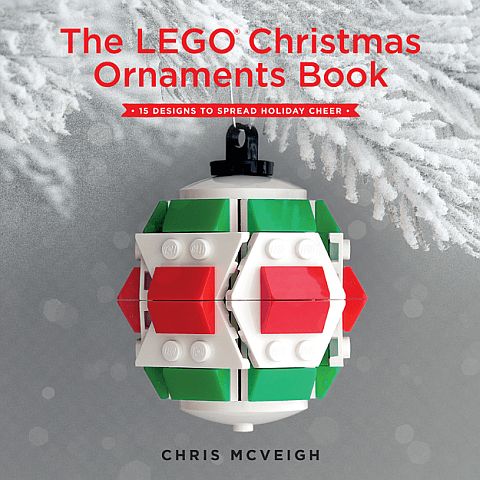
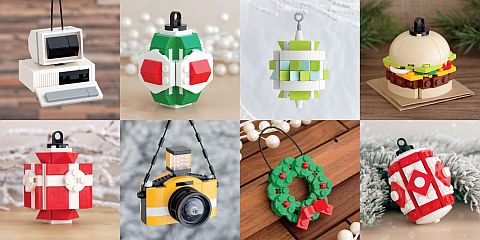
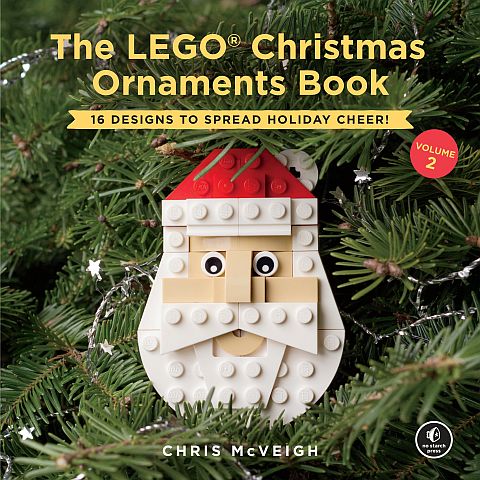

Another holiday book worth checking out is titled LEGO Holiday Ideas: More Than 50 Festive Builds. This is an official LEGO book published by DK Publishing. This book is recommended for children ages 6-9, and is packed full of original, inspirational build ideas for LEGO holiday decorations, gifts, games, and little stories. It’s similar to – but smaller – than the LEGO Build Your Own Adventure book series (also published by DK Publishing), and includes 41 LEGO pieces under its front cover to build a mini reindeer. The book is about 6×8 inches, full color, hardbound, with 80 pages. It could be a nice little gift for a creative and LEGO-loving child who already has a collection of LEGO pieces. Regular price: $14.99. Available with a discount on Amazon: LEGO HOLIDAY IDEAS BOOK ON AMAZON

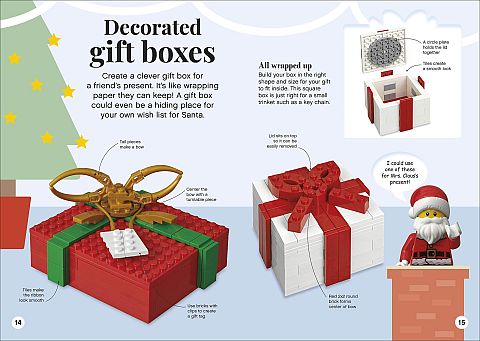
LEGO instruction books and inspirational books are a great way to expand the LEGO hobby. It is especially useful for kids and adult who are a little shy coming up with their own designs completely from scratch, but would like to do more with their LEGO bricks than just following official LEGO instructions. And LEGO books also make great gifts that don’t cost much and LEGO fans will appreciate.
- EXPANDING THE LEGO WINTER VILLAGE BOOK
- EXPANDING THE LEGO WINTER VILLAGE: VOLUME TWO
- LEGO CHRISTMAS ORNAMENTS BOOK – VOLUME 1
- LEGO CHRISTMAS ORNAMENTS BOOK – VOLUME 2
- LEGO HOLIDAY IDEAS BOOK
What do you think? How do you like these Christmas-themed LEGO books? Do you have any of them already? Are you planning to get them? Feel free to share and discuss in the comment section below!
And you might also like to check out the following related posts:


